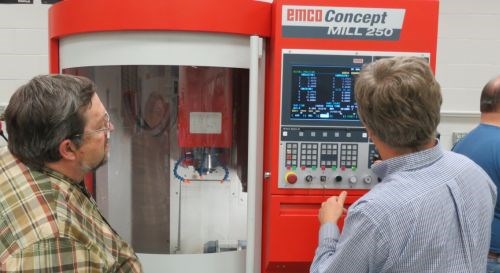A CNC Machine with Nine Controls
One obstacle to training the next generation of machine operators and engineers is exposing them to the variety of machine types and controls they are likely to encounter when they are hired. A community college in Illinois has the answer—training machines from Emco Maier with exchangeable control panels. Find out how students and their potential employers benefit.
Share






One obstacle to training the next generation of machine operators and engineers is exposing them to the variety of machine types and controls they are likely to encounter when they are hired. A community college in Illinois has the answer—training machines from Emco Maier with exchangeable control panels.
One of the newest models installed at the school, a ConceptMill 250, offers as many as nine different exchangeable CNC operator panels, including FANUC and Siemens versions. “Once our students are out of school, they could be in a shop that runs either CNC system,” Jack Adwell says. He is the dean of the Business Technology Division at the school. “This feature allows our students to become proficient with both controllers, and they will be prepared to operate effectively in either environment.”
Richland’s CNC lab also includes on-machine training with 10 offline computer stations using Emco control keyboards.
Learn how students and their potential employers benefit from these advanced training machines.
Related Content
-
Inside Machineosaurus: Unique Job Shop with Dinosaur-Named CNC Machines, Four-Day Workweek & High-Precision Machining
Take a tour of Machineosaurus, a Massachusetts machine shop where every CNC machine is named after a dinosaur!
-
Finding Skilled Labor Through Partnerships and Benefits
To combat the skilled labor shortage, this Top Shops honoree turned to partnerships and unique benefits to attract talented workers.
-
DN Solutions Responds to Labor Shortages, Reshoring, the Automotive Industry and More
At its first in-person DIMF since 2019, DN Solutions showcased a range of new technologies, from automation to machine tools to software. President WJ Kim explains how these products are responses to changes within the company and the manufacturing industry as a whole.





















